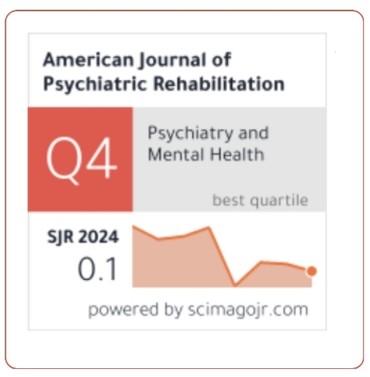Impact Of MGNREGA On Decision Making Power Of Rural Women- A Case Study
DOI:
https://doi.org/10.69980/ajpr.v28i1.82Keywords:
MGNREGA, employment, income generation, women empowerment.Abstract
Economic planning and the mixed economy experiment, which were started in response to the severe issues of unemployment and poverty, allowed India to experience tremendous economic growth. The Indian government has implemented several initiatives to combat unemployment and poverty since attaining independence. Because of decreased demand, consumption, and purchasing power brought on by unemployment, firms have fewer profitability, which in turn prompts budget cuts and labour reductions. The Mahatma Gandhi National Rural Employment Guarantee Act, often known as the MGNREGA, is one of the significant efforts that the Indian government has implemented. A key tactic in the current economic crisis is the Mahatma Gandhi National Rural Employment Guarantee Act, which went into effect on February 2, 2006. The Barpeta district initially implemented Phase II of the Act on April 1, 2007. In the district of Barpeta, the socioeconomic situation is dire. The economy of the Barpeta district is centered on agriculture. More precisely, 75% of the population is dependent on agriculture. We examined how the MGNREGA affects income and job development in the Barpeta district using primary and secondary data. Based on a sample of 100 households from in Barpeta district, the Difference in Difference method has given a positive result. Thus we found a positive relation between MGNREGA and employment generation. Similarly the ANOVA test has resulted the positive relation between financial independence women empowerment under the reign MGNREGA.
References
1. Bagchi, K. K. (Ed.). (2007). Employment and Poverty Alleviation Programmes in India: An Appraisal. Abhijeet Publications.
2. Baruah, P., & Radkar, A. (2017). MGNREGA in Assam: Who are taking up employment?. Journal of Rural Development, 213-230.
3. Bora, P. (2013). Manifesting Livelihood: The Role of Mgnrega In Assam. International Journal of Innovative Research & Studies, 2(5), 463-473.
4. Chakravarty, S (1987) :Development Planning: The Indian Experience, Delhi, Oxford University Press.
5. Dandekar,V.M . and Rath,N.(1971):Poverty in India, Indian School of Political Economy,pg.137.
6. Das, D. (2016). Role of MGNREGA in rural employment: A study of Barpeta district of Assam, India. International Journal of Humanities & Social Science Studies, 2(6), 241-248.
7. Deb, D. (2017). Impact of MGNREGA on Rural Livelihood of Assam. International Journal of Application or Innovation in Engineering & Management, 6(8), 141-146.
8. Deka, T., & Panda, B. (2015). Employment generation and social capital formation: A study of the impact of MGNREGA in Assam. International Journal of Recent Scientific Research, 6, 7619-7626.
9. Dey, S., & Bedi, A. S. (2010). The national rural employment guarantee scheme in Birbhum. Economic and Political Weekly, 19-25.
10. Giri, A. K. (2017). Rural development in India: through employment programmes. International Journal of Scientific Research and Management, 5(7), 6150-6154.
11. Gupta, A. (2006). A critical Review of the Rural Unemployment Problem and Evaluation of Employment Generation Programme in India. KK Bagchi (Ed), 133.
12. Hussain, A. (2022). Analytical Study of MNREGA’s Impact on Rural Livelihood of Indian State of Assam. Journal of Management Studies and Development, 1(02), 126-134.
13. Kamath, R., Murthy, R., & Sastry, T. (2008). NREGA surveys in Anantapur. Adilabad, Raichur and Gulbarga (2007–08), Ministry of Rural Development.
14. Khera, R. (2009):‘Pati Experience’, Frontline, Volume 26 - Issue 01, Jan 03rd-16th
15. Kochar, A. (2008). The Effectiveness of India's Anti-Poverty Programmes. The Journal of Development Studies, 44(9), 1289-1308.
16. Krishna, R. (1984). The growth of aggregate unemployment in India: trends, sources, and macroeconomic policy options. World Bank Staff Working Papers, Washington, D.C.,No. 638, Pp.4
17. Mathur, L. (2007). Employment guarantee: Progress so far. Economic and Political weekly, 17-20.
18. Panda, B., & Umdor, S. (2011). Appraisal and Impact Assessment of MGNREGA in Assam. North-Eastern Hill University. Shillong.
19. Roy, D. S., & Samanta, D. (2010). Good governance and employment generation through NREGA: A case study of Gram Panchayat in West Bengal. In Conference on" Infrastructure, Finance and Governance: Push for Growth, Organized by Ministry of Rural Development, GOI.
20. Saikia, A., & Borah, A. J. (2017). Impact of MGNREGA on Rural Livelihood in Assam. Journal of Rural and Community Affairs, 2(1), 58-72. me 10. www.ijcrt.org
21. Sen Amartya (1999):Development as freedom,Oxford University Presss,New Delhi.
22. Singh, S. K. (2002). Rural Development Policies and Programmes. Northern Book Centre.
23. Singh, S., Negi, R., & Dhanai, R. (2018). MGNREGA and its impact on employment and poverty alleviation: study of Pauri Garhwal District Uttarakhand. Journal of Economics, Management and Trade, 21(1), 1-6.
Downloads
Published
Issue
Section
License
Copyright (c) 2025 American Journal of Psychiatric Rehabilitation

This work is licensed under a Creative Commons Attribution 4.0 International License.
This is an Open Access article distributed under the terms of the Creative Commons Attribution 4.0 International License permitting all use, distribution, and reproduction in any medium, provided the work is properly cited.









